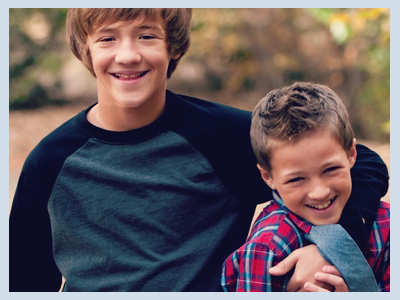Here are a few tips on preparing children already in the family for a new, adopted sibling or cousin. The advice to other family members can by applied to children as well.
Preparing Other Kids in the Family for Adoption
- Start reading books together about adoption.
- Find out what fears your child may have about the new sibling. Try to take steps to alleviate these fears.
- For example, children may worry that you will place them for adoption. Or that they will lose their special time with you. Or that they will have to give up their room. These are real issues that you can address with each child individually.
- Respect each child’s need for some private space.
- If they cannot each have their own room, then make sure they each get some special private space such as a footlocker that locks or a shelf in a closet that is just theirs.
- As you dive into adoption procedures, such as writing your own autobiography or creating lifebooks with photos, drawings and videotapes, include your child.
- Let them create their own versions of the lifebooks and autobiographies.
- Decide when it is appropriate to begin discussing adoption with your children.
- Remember, the process can take some time and children can get impatient. On the other hand, they need a fair amount of preparation time and should not be suddenly “surprised” with an unexpected sibling.
- Include children in meetings and visits with the adopted sibling’s birth family
Preparing Your Relatives for Your Adoption
The following are some specific ideas for preparing your relatives for a newly adopted family member.
- Be honest about your plans, your motivations and your expectations.
- If infertility is one of the issues, let them know this and give them their own time and space to grieve the loss of the “family bloodline” before expecting them to eagerly welcome an adopted child into the family.
- Although it may be hard to do, consider asking for, and genuinely listening to, the advice of extended family members.
- Their advice may be helpful as you explore adoption alternatives, such as international versus domestic, infant versus older child, etc.
- Include extended family members, if possible, in your preparation for the adoption process.
- Often problems occur within families when the grandparents and other extended family members did not have time to process their own feelings, questions and issues and were suddenly thrust into a new and unfamiliar role as grandparents of a child not biologically related to them. Just as you need time to prepare, so do they. Don’t assume a first reaction is a final one.
- Order subscriptions to adoption periodicals for grandparents and other important extended family members.
- Reading about the issues and seeing pictures of real families formed by adoption can help ease them into their new role.
- Encourage grandparents and others to attend adoption conferences, picnics, or other gatherings where they will be able to see and interact with (or just sit back and quietly observe) adoptive, foster and birth families interacting together.
- If you are part of a support group, consider sponsoring a “Grandparents Night”.
- Discuss adoption terminology in general and your child’s story in particular.
- Discuss what information is private, for family knowledge only, and what is okay to share outside the family circle
- Remember- birth families have extended families too – include birth grandparents, and other relatives in your extended family circle.
Preparation for the Child to be Adopted
- Provide general information about permanence ahead of time to “prepare the ground” – to the child?
- Brochures about adoption
- Articles from Foster Care Youth United about family,
- Children’s books on adoption
- Videos, role play with dolls – other creative expressions
- Help the child/youth think about what living with this family might be like
- “If you were part of this family, what would that be like?”
- “What might the best part be?”
- “What might the hardest part be?”
- “How long would it take before you felt you fit in?”
- “What would it take to feel like you belong?”
- Provide photos, scrapbook of adoptive family to the child/youth. At a recent meeting of youth in foster care, when asked what would have been most helpful prior to moving in with a family, the most common answer was, “I wish I had a picture and information about the family before I had to meet them in person.”
- Help the child/youth create a list of questions – “Important things I want to know about my new family”
- Help the child/youth create their own “profile” and scrapbook FOR the new family – i.e. “What I want my new family to know about me”
- Update the youth’s Lifebook
Source: 2004 Coalition Conference Worshop Presentation by Sue Badeau, sbadeau@aol.com

